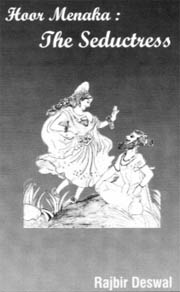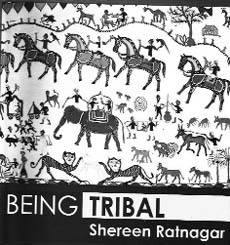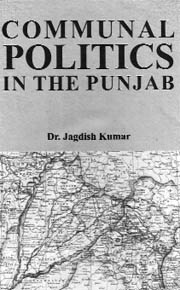|
Short Takes
Of folk theatre, tribes and
communal politics
Reviewed by Randeep Wadehra
Hoor Menaka: The
Seductress
by Rajbir Deswal
Pages: 48. Rs. 50
 Since
ancient times, there have been mutually enriching exchanges
between folklore and Sanskrit texts. This is evident from the stories
appearing in the various Puranas having similarities with those having
plebian roots like oral literature. Haryana’s swang is a fine
example of this process which involved a creative mix of history,
mythology and fantasy. The story of Menaka and Vishvamitra appears, with
certain variations, in different texts ranging from the Mahabharata to
Kalidasa’s works. Some experts see in these stories evidence of
ethnicity and caste-based rivalries. People from different castes used
to become ascetics, called rishis. While Brahmins had the sole
right to become devrishis (divine ascetics, the highest status an
ascetic could reach), Kshatriyas could aspire to become rajrishis
(royal ascetics, second-rung status). Rajrishi Vishvamitra was
performing severe austerities in order to achieve his life’s ambition
of becoming devrishi; but his enemies, who knew how insecure
Indra always felt about his throne, decided to thwart Vishvamitra. They
knew Indra would lend his ear to anyone who posed as his well-wisher and
forewarned him of an impending threat. And, Indra was not above using
his court’s females to seduce and destroy his potential rivals. Menaka,
the celestial nymph, was the most desirable of females in Indra’s
realm known as Indralok. Since
ancient times, there have been mutually enriching exchanges
between folklore and Sanskrit texts. This is evident from the stories
appearing in the various Puranas having similarities with those having
plebian roots like oral literature. Haryana’s swang is a fine
example of this process which involved a creative mix of history,
mythology and fantasy. The story of Menaka and Vishvamitra appears, with
certain variations, in different texts ranging from the Mahabharata to
Kalidasa’s works. Some experts see in these stories evidence of
ethnicity and caste-based rivalries. People from different castes used
to become ascetics, called rishis. While Brahmins had the sole
right to become devrishis (divine ascetics, the highest status an
ascetic could reach), Kshatriyas could aspire to become rajrishis
(royal ascetics, second-rung status). Rajrishi Vishvamitra was
performing severe austerities in order to achieve his life’s ambition
of becoming devrishi; but his enemies, who knew how insecure
Indra always felt about his throne, decided to thwart Vishvamitra. They
knew Indra would lend his ear to anyone who posed as his well-wisher and
forewarned him of an impending threat. And, Indra was not above using
his court’s females to seduce and destroy his potential rivals. Menaka,
the celestial nymph, was the most desirable of females in Indra’s
realm known as Indralok.
Thus, Indra sends
Menaka to interrupt Vishvamitra’s penance and cause his fall. This
slim volume explores the mindscapes of the two major characters –
Menaka and Vishvamitra – when she descends from the heavens to seduce
him. This work, originally in the form of Haryanvi folk theatre swang
authored by Pt Lakhmi Chand, goes beyond Menaka’s success in her
mission. It uses Shakuntala’s birth and subsequent abandoning by her
parents as vehicle for message against female foeticide. That such
efforts were on in rural Haryana even before the movement to protect the
girl-child became fashionable would not have become known had Rajbir
Deswal not published its English version. Kudos to him.
Being Tribal
by Shereen Ratnagar
Primus Books. Pages: xiii+111. Rs. 825
 There
are more than 700 Scheduled Tribes in India. But, even before
this schedule was drawn up various anthropologists/ethno-archeologists
had been documenting the lifestyles, customs, beliefs, traditions etc of
different tribes in various parts of the country or, rather, the
subcontinent. From these records, one learns of the eco-friendly
lifestyles of diverse tribal populations. One also gets acquainted with
their variegated cultures, languages, cuisines etc. There
are more than 700 Scheduled Tribes in India. But, even before
this schedule was drawn up various anthropologists/ethno-archeologists
had been documenting the lifestyles, customs, beliefs, traditions etc of
different tribes in various parts of the country or, rather, the
subcontinent. From these records, one learns of the eco-friendly
lifestyles of diverse tribal populations. One also gets acquainted with
their variegated cultures, languages, cuisines etc.
Ratnagar is an
archaeologist who has worked on various social and economic aspects of
cultures of the protohistoric period. Here, she focuses on the Rathwa
people of Gujarat’s Tejgarh-Chhota Udepur area. The study traces the
economic as well as social marginalization of Rathwas as their
traditional way of living fell victim to the mainstream society’s
onslaught.  She discusses their present status and the need for positive
discrimination to empower them. She discusses their present status and the need for positive
discrimination to empower them.
Communal Politics in
the Punjab
by Dr. Jagdish Kumar
Unistar. Pages: 157. Rs. 295
Social
stratification in Punjab is as complex and stark as in the rest
of the country, with caste and creed being major factors. The author has
made pertinent points regarding the genesis and extent of communalism in
Punjab but to blame it all on colonialism and such modern phenomena as
democracy and socio-economic transformation does not represent the
entire truth. The divisions were very much there in the pre-colonial or
medieval times too. The British merely accentuated these divisions to
promote their imperialistic agenda. The vote bank politics in today’s
Punjab reflects the national trends. Our politicians have accepted the
communal faultlines as unalterable. This book provides food for thought
to all those who are interested in the socio-political scene in Punjab.
|